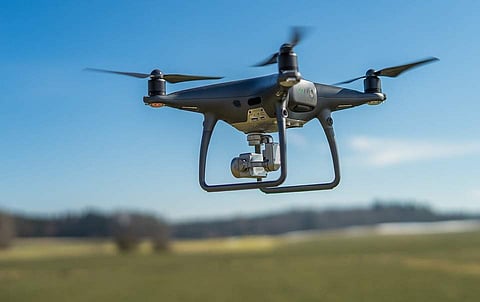
- News
- Campus
- Exam
- Podcast
- Web Stories
- Do You Know
- Path Finders - UG Programs
- Videos
- Book Review

To drive innovation among students and start-ups, Dassault Systèmes is conducting a Drone-a-thon, a hackathon for drones. Students and tech start-ups will learn how to make fully functional drones and will also make one by the end of this ten-day challenge. The competition is powered by Dassault's 3DEXPERIENCE Lab and participants can send their entries till October 31.
The top 10 teams will be selected from all the entries. "The top 10 teams will then be selected and they will be trained by various experts in Simulation, Design and Systems Engineering for a week," said Suhaspritipal Gongate, Lead, 3DEXPERIENCE Lab. The top 10 teams will be part of the Drone-a-thon: Propelling Sustainability challenge where they have to create drones that can be useful for sectors like healthcare, defence, agriculture and infrastructure.
Speaking about how the Drone-a-thon will work and what the participants will learn, Gongate said, "The 3DEXPERIENCE platform is cloud-based and the top 10 participants will have access to a standard template from Dassault — which includes the motor, batteries and controller. The participants will have to design their own drones based on these templates. They have to decide on factors like payload, speed of the motor and battery consumption, which will be simulated. This will help them to build the drone quite easily in 10 days."
The entire training and drone-building process will only start from November 9 and will go on till November 20. A finale event has also been organised on November 25, where the top three teams will be able to demonstrate their ideas to Dassault and one team will then be selected as the winner.
The Drone-a-thon aims to find disruptive solutions to major problems that each of the chosen sectors might be facing, said Gongate. "The drones designed for a particular purpose has to be mindful of the sector. For example, a spraying drone meant for agriculture will have to be built with payload, velocity and vibration in mind. Moreover, the batteries will have to support not only the motos but also the pump for spraying. Factors like where the spraying will be done in the field and how much will be sprayed will also have to be determined. The students have to think about these parameters and attachments — how they'll attach the tank, how it will be stable aeronautically. All this will be simulated virtually and the students will have to also determine whether the drone will fly when it is built physically," added Gongate.
